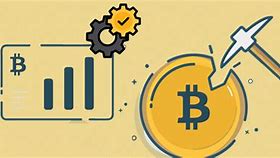Understanding Hash Rate:
In the world of cryptocurrencies, hash rate plays a crucial role in determining the security and efficiency of blockchain networks. It is a measure of the computational power that is being used to mine and process transactions on the network. In this article, we will explore what hash rate is, how it works, and why it matters in the world of blockchain.
What is Hash Rate/Hashing Power?
Hash rate is the rate at which a mining machine can solve the mathematical equation that is required to validate transactions on a blockchain network. The more powerful the mining machine, the higher the hash rate it can achieve. Hash rate is measured in hashes per second (H/s), and it determines how quickly new blocks can be added to the blockchain.

How Does Hash Rate Work?
When a miner wants to add a block to the blockchain, they must first solve a complex mathematical equation. This equation is designed to be difficult to solve, so it requires a lot of computational power to complete. The miner's computer must guess a random number that, when combined with the block's data, produces a hash that meets a certain set of criteria. This is known as the "proof of work" algorithm.
Once the miner has found the correct number, they broadcast the new block to the network. Other miners can then verify the block's validity by performing the same calculation. If the result matches, the block is added to the blockchain. The miner who found the correct number is rewarded with newly minted coins or transaction fees, depending on the network.
Why Does Hash Rate Matter?
Hash rate is important because it determines the security and efficiency of the network. A higher hash rate means that there are more miners competing to solve the mathematical equation, which makes it more difficult for any single miner to control the network. This makes the network more secure against 51% attacks, where a single miner controls the majority of the network's computational power and can manipulate the blockchain.
Additionally, a higher hash rate means that new blocks can be added to the blockchain more quickly. This makes the network more efficient and reduces the time it takes to process transactions. This is especially important for networks like Bitcoin, where the block time is 10 minutes. A higher hash rate means that blocks can be added more quickly, which reduces the time it takes for transactions to be confirmed.

Conclusion:
In conclusion, hash rate is a crucial metric in the world of blockchain. It determines the security and efficiency of the network and is a measure of the computational power being used to mine and process transactions. A higher hash rate means a more secure and efficient network, while a lower hash rate can lead to potential security vulnerabilities and slower transaction processing times.
